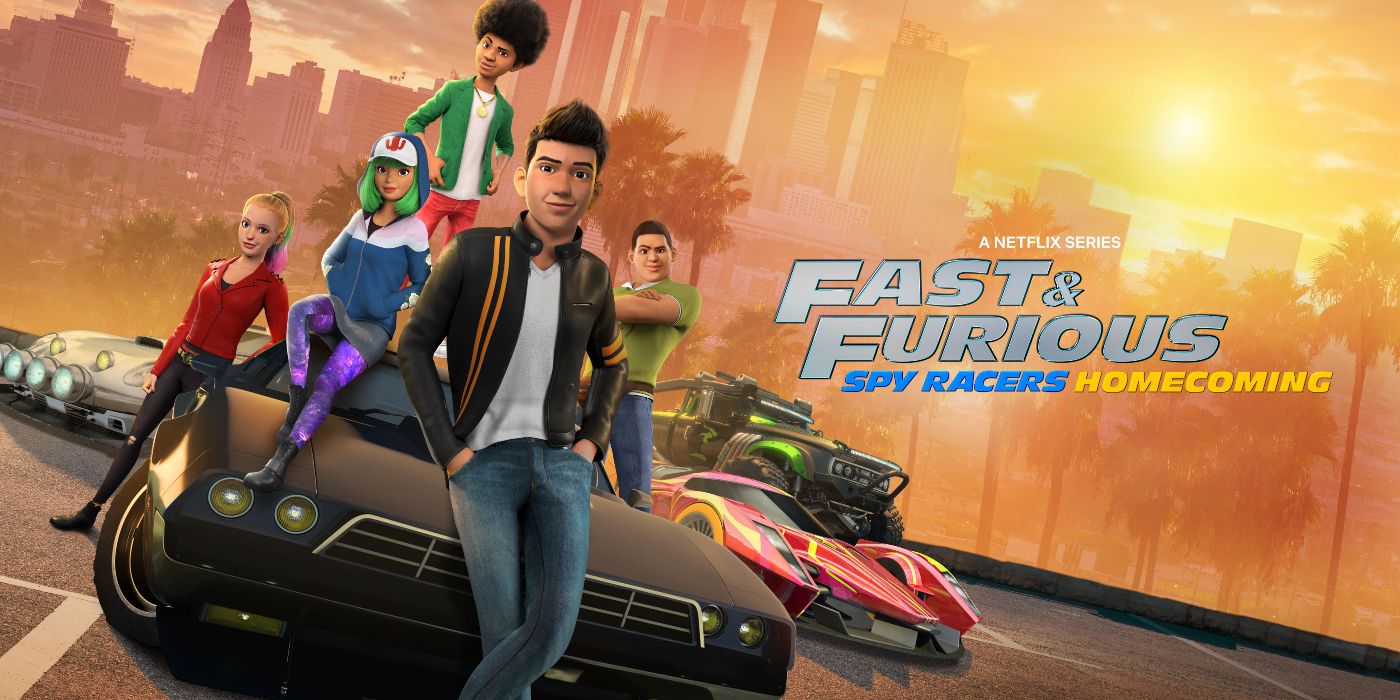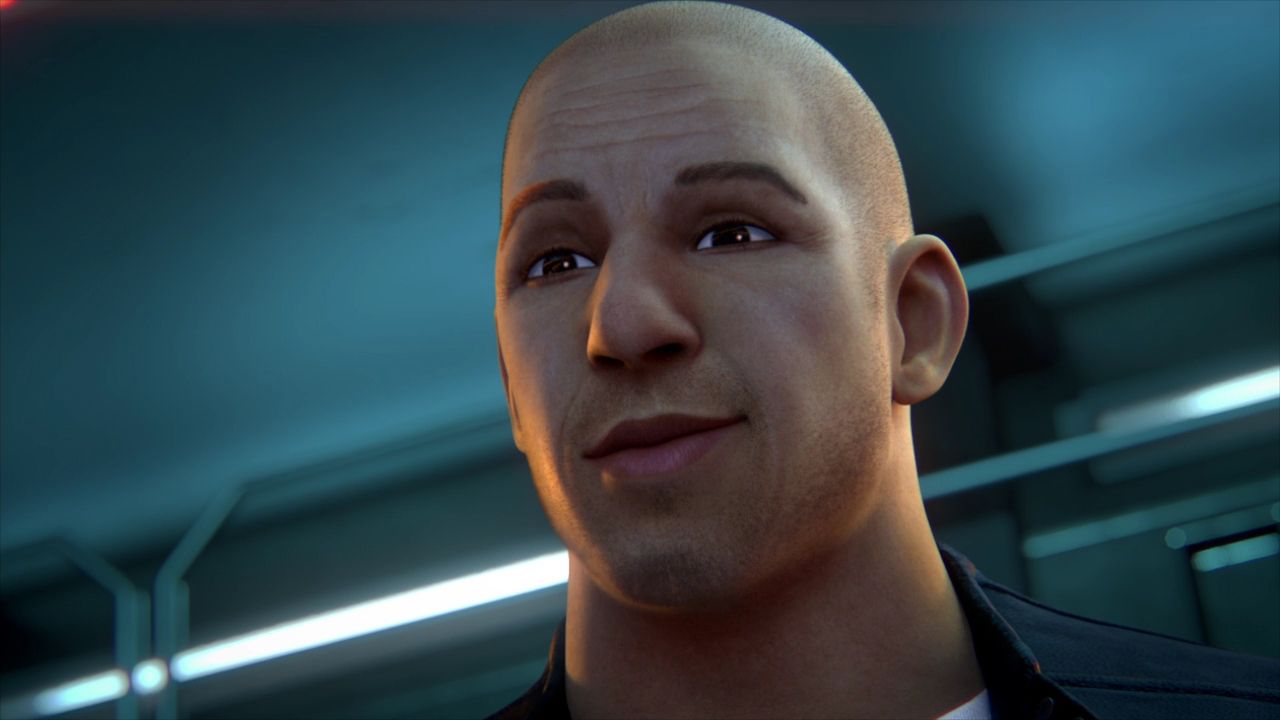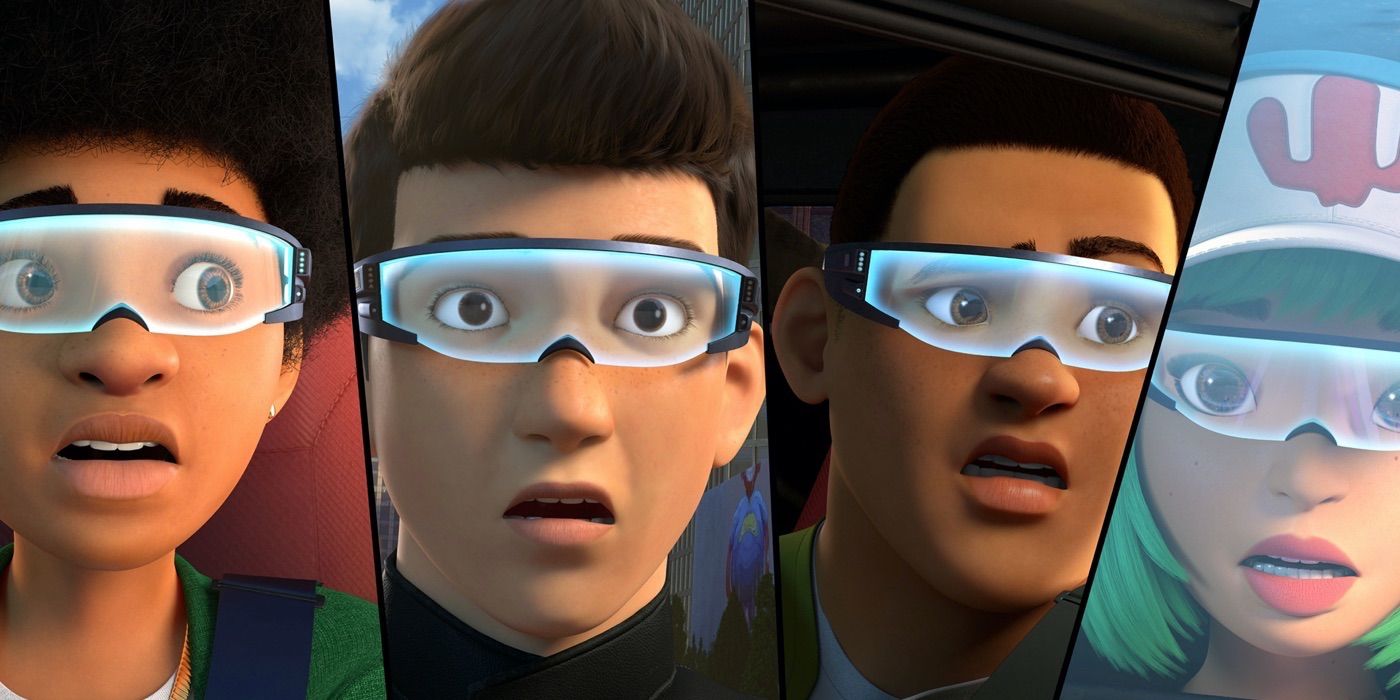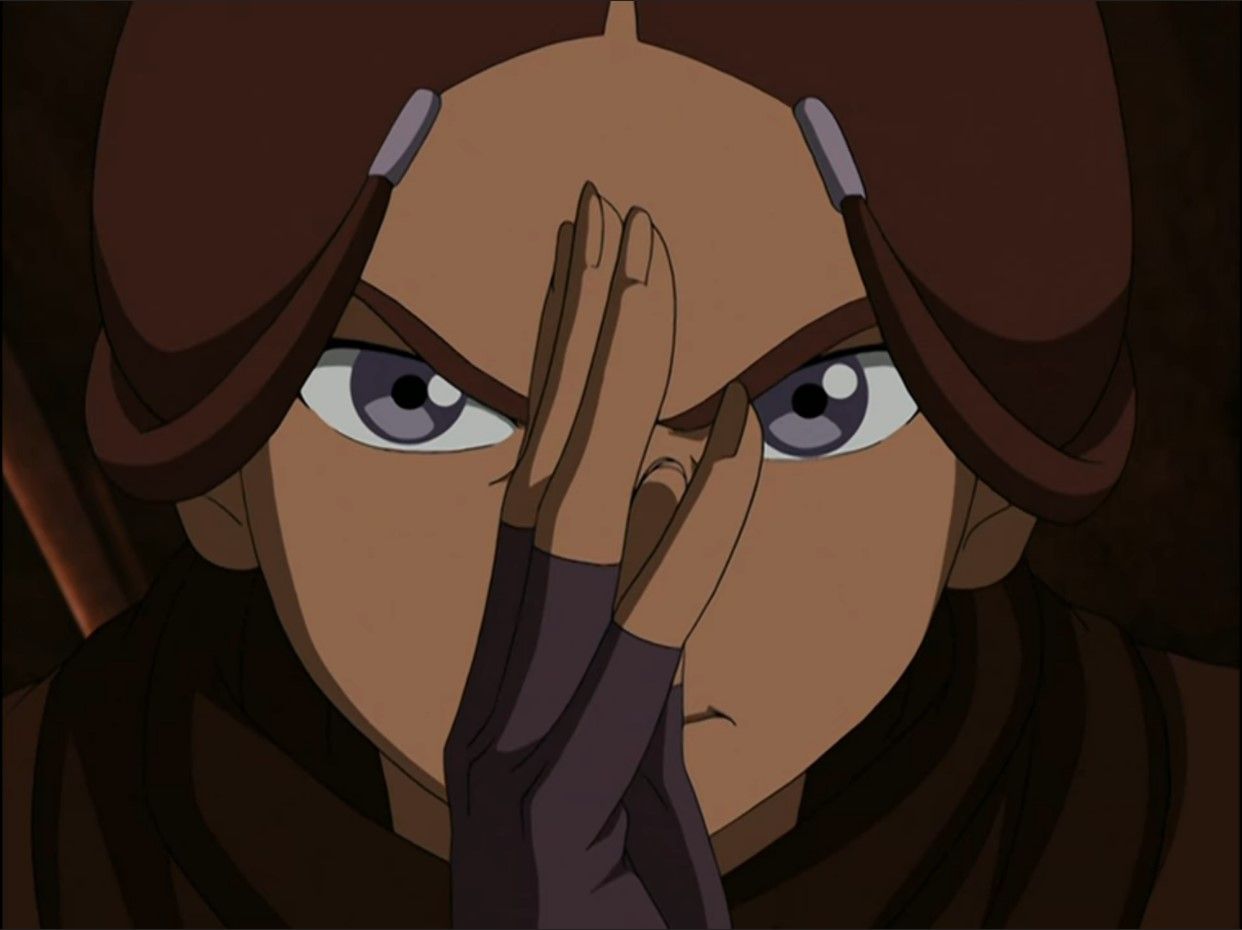Editor's note: The below interview contains spoilers for Fast & Furious: Spy Racers HomecomingFast & Furious: Spy Racers Homecoming has come to an end. The family-friendly, animated spin-off of the Fast & Furious franchise ended after six seasons, with a high-thrill chase scene on the streets of Los Angeles, a fight against a cyborg, and of course, a fambly cook-out. For six seasons, the show has managed to capture what makes the Fast franchise so endearing, while toning it down just slightly for young audiences.
Ahead of the release of the final season, I got the chance to talk with showrunner Tim Hedrick about how they prepared to end the show, his wishlist for the final season, bringing back Vin Diesel as Dom Toretto, portraying anxiety in kids' animation, and crafting a high-tech villain. Additionally, I simply had to ask Hedrick about working on Avatar: The Last Airbender and The Legend of Korra, and crafting the scariest moments of both shows, and why he needed a break from plot-driven shows after Avatar and Voltron: Legendary Defender.
Collider: How far in advance did you know that this was going to be the final season? And what was on your wishlist for the ending?
TIM HEDRICK: It was when we were finishing up the writing for the series, around March of last year. As for a wishlist, obviously we had to bring Dom back. We knew that we wanted to come back to LA; we knew we wanted to come home again. I really wanted to get some of the iconic landmarks in LA, in the show. We really wanted to have a big Hollywood premiere, and race up and down Hollywood Boulevard, and then go up to Mulholland and race around there, and go to the beach. And do all the stuff in LA that I always expected to get into the show, but never had time. So it really was making this little list of things, "All right. We got to do this, we got to do this, we got to do this." It was a lot, to squeeze in.
That was all really, really fun and exciting. Obviously, there were challenges that were unforeseen. Creating this whole season as everything shut down and doing everything remotely, everything took a little longer than we thought. But we got it all together. It was an exciting way to end up. There's always extra challenges for our Fast and Furious team. So that was one of them.
Can you talk about bringing Dom back, because that was a great moment between him and Tony.
HEDRICK: That was great. It's always fun to bring Vin back in. He had helped us in the beginning get our bearings in this franchise and figure out, what Fast and Furious is all about. It's so exciting always to bring him back in, and show him everything we've done. He's been watching the whole time. So it was great. Obviously, he was busy working on his own resolution of all those movies. So it's a little bit of a scheduling issue to get him in. It was really exciting. And then, to have him and Tony have that final fight with Dan at the end, was really exciting. It really worked out great. It's always good. It just brings the whole sense of family back. When Dom is there, you really feel that in the show. So that's great.
You also have the iconic cook-out in the final episode.
HEDRICK: You can't end up without the cookout at the end. There are certain things that you expect to see in the Fast Furious show, that if you deviate from that, it just doesn't seem right.
How did you guys come up with the villain for the final season?
HEDRICK: I thought it would be interesting, because we never really see who runs this big agency that these guys answer to. And it seems like even Ms. Nowhere, doesn't really know or see. So we thought it would be really an interesting concept to see if, "What if this whole thing got taken over and no one even really knew about it?"
The idea of global warming being this existential threat to the globe, is something that we definitely thought about a lot, since we have a show that's all about driving cars around. So we thought that maybe, this is something that we could address in some way. So to tie those two things together and think about, "What if this AI has looked at every thread on the globe and thought, this is the number one thread I have to eliminate, and this is how I'm going to do it?" So that's how we thought it would be interesting to get into that. And we have played with the AIs before.
One moment that really took me by surprise is when the characters break down in the first episode from stress and are kind of freaking out. Why was that important to portray in a show for kids?
HEDRICK: What's important to me, is always making sure that we remember that these are just kids, and that they're human, and that they have these are just kids. They're under this tremendous stress to save the world all the time, and how that would weigh them down. That's part of what separates our show from the film franchise is that, those characters are so strong that they can bear up all this stress. But Tony Toretto and his team, they're just teenagers.
So of course they're going to be buckling under this pressure all the time. So I think that gives them a sense of reality, that you feel for these guys, like, "Man, there they are. They're working all the time." It seems fun, but also people are shooting at them constantly. So that's got to take a toll.
And you still find the time to have plain bat-shit moments like the laser whale.
HEDRICK: That one was a pretty ridiculous one. We had all of these weapons that we thought were just... We've constantly come up with these. While you're working on the show, you're like, "This would be interesting, but is that too crazy?" You're throwing them out. And we really wanted to have some reason to bring back all of these ridiculous ideas that we'd had over the course of making the show.
And then we thought, obviously there's going to be some research and development department in Nowhere's agency, that comes up with the same idea as we do. So they must have made these, tested them. They must be somewhere. And what happens to those weapons? They have to destroy them. Of course, they're not just going to take them to some black box and get rid of them. You could have a whole holiday around that. So it really just developed into our little holiday episode, was this Generation Day. And I was really excited to bring Keith David in, to do the Ken Burns documentary segment of that. Which I just thought, "That was one of my favorite things in the show." Was doing that little documentary that Gary and Julius put together.
I also wanted to ask about Avatar: The Last Airbender. I was looking at some of the episodes that you wrote, and I was interested by the fact that many of the ones you wrote tended to be a darker, horror-ish. How does writing something like "The Puppeteer" compare to an episode like "The Ember Island Players?"
HEDRICK: I think a lot of what I'm interested in horror and science fiction, is the, what if elements. It's pursuing an idea to this, almost, the crazy end of how far it could go. So with the Puppet Master, it's water bending. And we'd always talked about, the body is 75% water. You could literally water bend a person, but how would that work? What would it entail? What would it make if you feel? Would that turn you into a, this monster? And so, pursuing that angle, I think, is what I'm interested in.
It's the same thing you do in comedy. You push an idea into this ridiculous place. So it's like, "You know the Fire Nation is making propaganda about the team, and what would that look like, and how would they portray all of our favorite characters?" And so, it becomes this twisted version, that in that instance is comedic instead of being horrifying. Or it's comedically horrifying, I guess.
How do you balance those moments, or something like the more violent action scenes in Spy Racers, with them being shows aimed at kids?
HEDRICK: After I'd finished working on Voltron, which was very plot driven and very heavy, a lot of times. When I started on Spy Racers, I just really wanted it to be fun. That was my main motivation. Was like, 'This should be entertaining, nonstop. We should never have a moment where it's not going to just be fun." And so, that's how I looked at every episode that we ever did, was like, "Are we pushing this far enough to be fun not just for kids, but for me?" Because that's what I wanted to do. I don't know what kids are going to like, I just have to entertain myself.
As someone who grew up playing with hot wheels, this was right at my alley. I just could sit with those cars on my desk, and drive them around, and figure out what we were going to do. The root of it was just like, "This show was meant to be way more popcorn, way more pushed entertainment." You have to have those elements of danger to keep the story moving forward, but it never becomes overbearing. So that we can see the evidence of it weighing on them like we were talking about earlier, but we don't take it to a super dark place. We bring it back into an adventure, very quickly.




